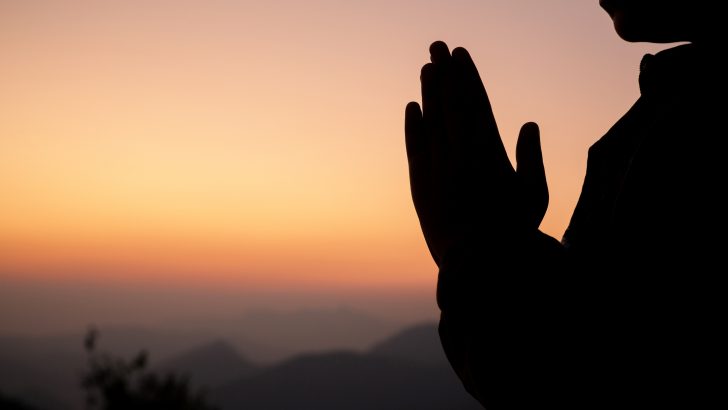Superstition to many, but the Church recognises our connection with the dead, writes Ruadhán Jones
At the beginning of November, the liturgical calendar turns our minds heavenward with the feasts of All Saints and All Souls. As many of our pagan ancestors did, we take the time to commemorate, pray for and commune with the dead. It is a time to celebrate a special closeness to all our brothers and sisters of the Mystical Body of Christ.
For those in the secular world, this has all the markings of superstition and irrationality. Two recent converts capture this perfectly in their autobiographies. Contemporary English poet and Catholic convert Sally Read evocatively describes an atheist’s understanding of death, that of her father.
He lectured her, shortly before his death, on how his funeral was to be carried out: “No vicars or religious, no ceremony of any kind. Go up to the crematorium and press the button. That’s it. No poem or piece of music, certainly no prayer. His atheism was sincere and profound; once dead, he would be utterly extinguished. The rest was expensive sentiment.”
Is it any wonder then that the pandemic has caused such fear and anxiety, despair in some cases – when life ends, that’s it. We are faced with the annihilation of death. The Catholic perspective could not be more opposite to this – we believe in an afterlife where the dead may live more completely than they ever did on Earth.
Communion
But this might in some vague way be accepted by an atheist, that there is a world beyond this one or other than it. Catholics, however, go further. To explain, I turn to our second convert, the American comedienne Jennifer Fulwiler.
In her autobiography, she writes: “In my recent reading I’d learned that Catholics believe that supernatural forces act in a real way in our world and that the Church has never wavered on ancient mystical beliefs that would be sure to get you laughed out of enlightened social circles today.
“[Catholics] believe that people in heaven are aware of what goes on here on earth, and that they pray for us… A tingling sensation rippled under my skin. I suddenly wondered if my deceased grandfather might be very much alive, even present in a certain sense… I wondered if he had been praying for me all this time – if he was perhaps praying for me right now.”
Not only does the Church teach that there is life after death – those who die continue to be active in our lives.
The Holy Souls
Consider November now in this light. The Church dedicates the month to the Holy Souls in Purgatory. We are especially reminded to pray for the dead – family, friends, acquaintances, enemies, leaders, stars, etc. In doing so, this reminds us of their presence and their connection with us. They are not annihilated, but active in our lives and we in theirs.
In November, then, both nature and the Church call us to reflect on our intimate connection with the dead”
When we think of the liturgical year, we might think of it as being dead or inanimate. We can forget that it is, in some sense, alive, a cycle much like the seasons and just as important. November is a season of ‘dying’ both liturgically and naturally – leaves are falling, animals are hibernating, life is winding down.
Similarly, the liturgy calls us to focus on the Four Last Things: death, heaven, hell, and final judgment. It ‘animates’ our understanding, bringing to mind those who have gone before us and who might be in need of our prayers, as we are of theirs.
In November, then, both nature and the Church call us to reflect on our intimate connection with the dead. How then can we do this?
Visiting graveyards
Learning from the previous lockdown, it is a blessing that the Government allow us to visit graveyards, even under these present restrictions. Given that we are often afraid of death, it would seem to make more sense to hide it away – instead, we go to elaborate lengths to commemorate and symbolise the lives of the deceased. If graveyards often have a negative connotation, this pandemic has served as a reminder of their worth as sites of mourning, remembrance and communion.
Visiting graveyards is a significant way we can devote ourselves to the Holy Souls this November. Beginning with our own deceased family members and friends, visiting their graves is an opportunity for reflection and meditation. Personal offerings, such as candles and flowers, could be picked or purchased for dedication.
While it might not be an immediate thought, I would encourage where possible making this a family event. Obviously there are strict limits on gatherings and meetings between households, so this may not be practicable. But as we wander through, praying for the dead, the stones of young and old reveal stories of life, love, grief and loss. Walking through the graves teaches empathy.
Jennifer Gregory Miller, a Catholic journalist and authority on the liturgical year, writes: “Besides being an opportunity for contemplation and prayer, we are providing opportunities to be comfortable and familiar with the cemetery. We do not need to be afraid of death, but understand that we are still deeply connected with those who have died.”
She continues: “Having the familiarity with cemeteries keeps our departed brothers and sisters in Christ in the forefront of our minds. Our visits bring tangible memories. All this helps us remember to pray for the Poor Souls in November.”
Saint of the day
Another way of commemorating the community of believers is reflecting on the saints, those who are already in Heaven. Here, we become more aware of the active participation of the dead in our lives. As St Thérèse of Lisieux said, “I will spend my time in Heaven doing good on Earth.”
The saints serve as an example for imitation and also a reminder of our heavenly destiny. Their lives are often heroic and dramatic, making them an ideal means of conveying the universal call to holiness. For children especially the lives of the saints are a good introduction to the Faith in action.
A practice which has become daily one in my household is that someone will look up the saint of the day – often this task falls on my father. We then discuss their lives, typically over lunch or dinner. This is quite a simple task, but an enjoyable one and easily integrated into our daily lives. We also integrate the saint into our family prayer, making sure to ask the saint of the day to pray for us.
Memorial shrines
We have an innate desire to build shrines of different kinds. Trophy cabinets as shrines to our, or our children’s, achievements; photo albums of family trips or of marriages; altars with statues, rosaries and so forth. All in one way or another work for the same purpose – to commemorate something or someone.
For November, a possible means of commemorating our dearly departed is to create a display in their honour. It can be as elaborate or as simple as you like. A general plan might be for a photo, a candle and an object of personal significance.
If you’re in a situation where this is feasible, you could take a ‘Christkindl’ approach. Everyone writes names of the beloved departed on strips of paper to put into a basket. Then draw names out to pray for that person or persons for the month.
All of these small signs and activities are a means of devoting ourselves to the Holy Souls. In a time of suffering such as this, knowing that our beloved dead are still active in our lives can be a great comfort. Our prayers and actions during November for the Holy Souls are opportunities for us to make internal and deeper, connections with the members of the Communion of Saints.


 Ruadhán Jones
Ruadhán Jones
